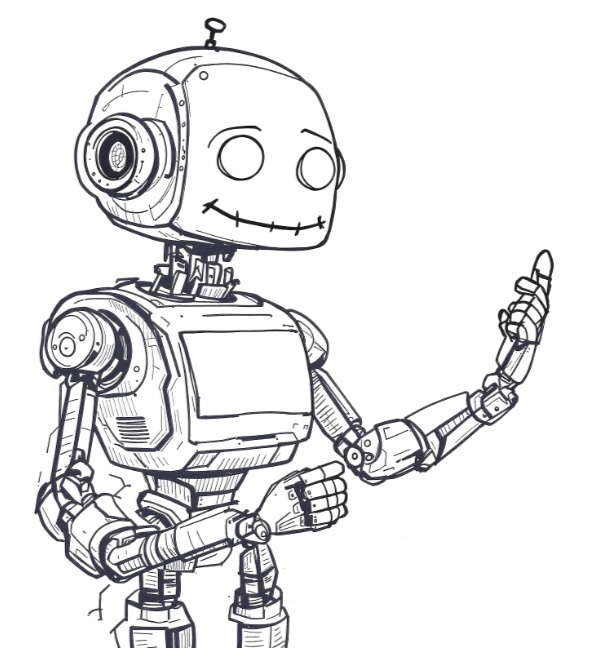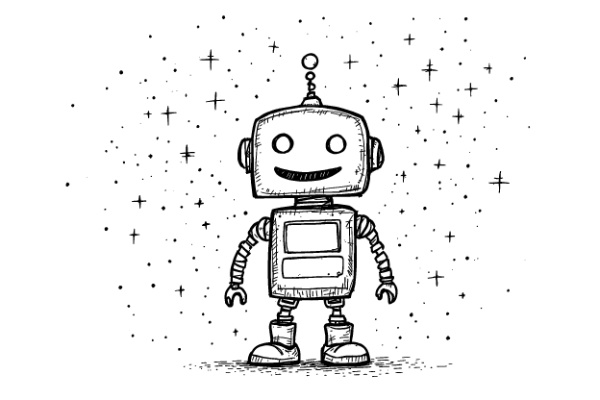Imagine a world where constructing a job description feels less like guesswork and more like a well-tuned conversation.
I recently spoke with a hiring manager who spent hours crafting the perfect job post for a senior developer role. She knew the technical requirements but struggled to convey the collaborative culture and growth opportunities. Too formal, and it felt cold. Too casual, and it seemed unprofessional.
Finding that balance - between expertise and approachability, between requirements and possibilities - that’s the art of writing job descriptions that truly connect with the right candidates.
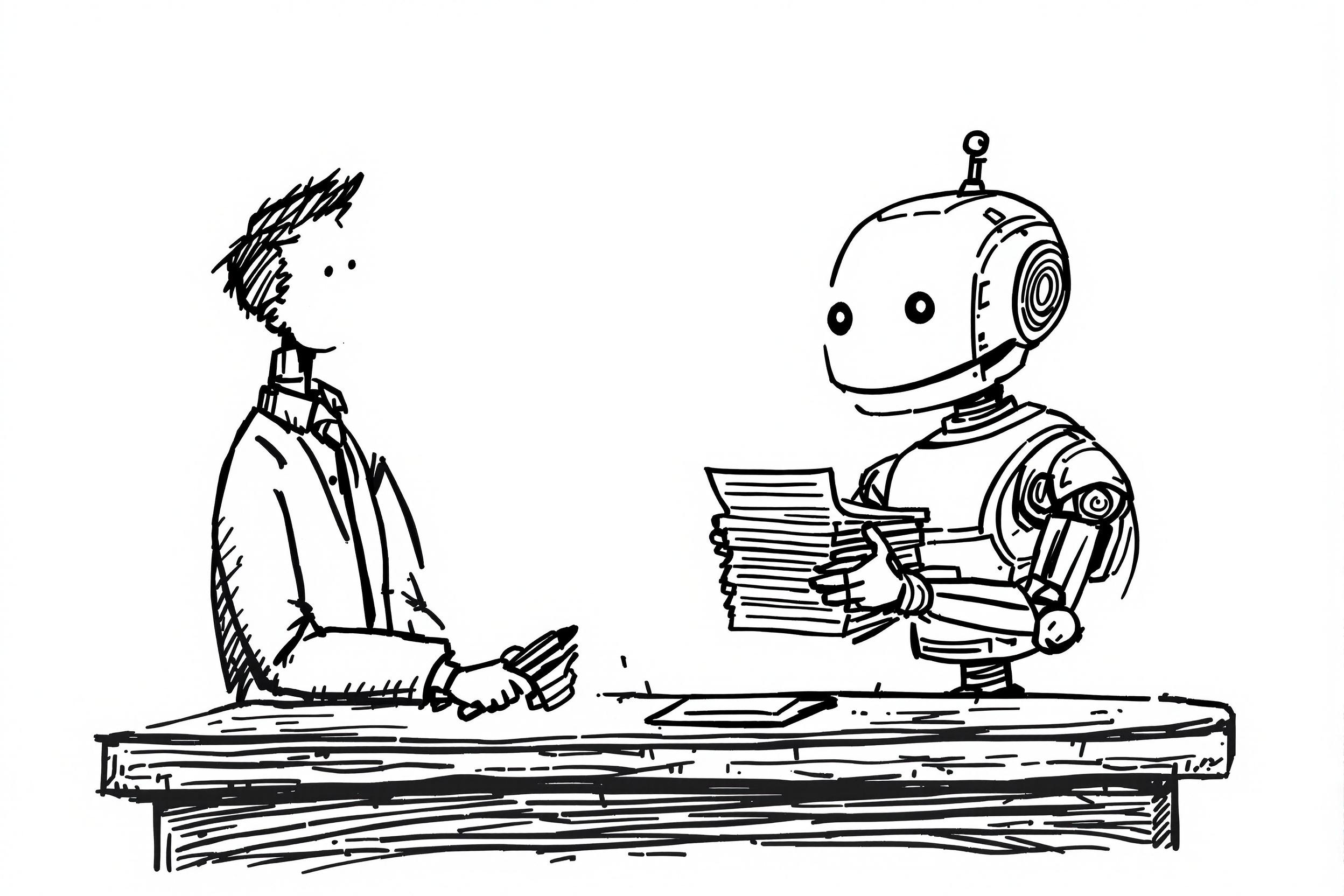
We spend a lot of time talking about ‘best practices’ for writing job ads, but rarely do we get under the hood and ask: Why do some words light a spark while others fall flat? Or why do some descriptions subtly discourage talented people from applying? Understanding the psychology of job descriptions isn’t just a copywriting exercise—it’s a key to building better teams.
The Strange Mirror of a Job Description
Ever stumble upon a job post that reads like a riddle? Sometimes it’s too vague, sometimes it’s too demanding, and often it feels more like a wishlist than a job. A job description is more than a list of tasks: it’s a narrative. It projects an image—of the role, the company culture, the candidate’s future. Each sentence can invite, push away, reassure, or intimidate. It’s a subtle interplay of expectations, promises, and identities.
Think about it: How many brilliant people never apply because the text seems off-putting? How many candidates do we miss because the language subtly suggests they don’t belong? Job descriptions reflect a company’s understanding of its own roles and its respect for candidates’ time and intelligence.
Seeing the Invisible Forces Behind Language
Our brains react to language in unexpected ways. Subtle word choices can trigger feelings of exclusion or inspire a sense of belonging. When we talk about “rockstars” and “ninjas” in job descriptions, we might seem hip, but we also risk pushing away those who don’t identify with that culture-coded language. When we rely on jargon, we risk confusing job seekers who have the right skills but different labels for them. When we oversell, we risk later disappointment and higher turnover.
It’s a high-wire act: The psychology behind a job description is about the tension between clarity and aspiration.
Communicate too dryly, and you’ll get a flood of mismatched applicants.
Make it too fluffy, and the right people might doubt your seriousness.
Each phrase is a nudge toward or away from the ideal candidate.
From Gut Feelings to Data-Driven Insights
We’re all human, and humans have biases. Historically, job descriptions have reflected the unconscious biases of hiring managers—stereotypes, cultural references, even hidden signals that certain groups aren’t welcome. Over time, organizations started noticing patterns: certain phrases reduced the diversity of candidate pools, certain tones made roles seem too narrow. But knowing this was one thing, fixing it another.
Enter AI-driven language tools. Suddenly, we can analyze thousands of job postings, see which words correlate with applicant diversity or quality, and optimize language to be more inclusive. AI can highlight terms that tend to attract or repel certain demographics, shining a light on the subtle biases we never noticed.
Here are some examples of how word choices can subtly influence candidate perceptions:
Potentially Exclusionary Terms vs Inclusive Alternatives:
- “Ninja” / “Rockstar” → “Skilled professional” / “Expert”
- “Young and energetic” → “Dynamic” / “Motivated”
- “Strong English” → “Excellent communication skills”
- “Cultural fit” → “Contributes to our culture”
- “Aggressive” → “Proactive” / “Results-driven”
- “Dominant personality” → “Leadership potential”
- “Work hard, play hard” → “Collaborative and engaging environment”
- “Digital native” → “Tech-savvy” / “Digitally fluent”
The goal isn’t to strip personality from job descriptions, but to ensure the language welcomes all qualified candidates. Sometimes a small word change can make a big psychological difference in how inclusive a role appears.
The Quiet Revolution: AI’s Role in Rethinking Job Posts
I recall seeing an early AI-based job post analyzer. It scanned a draft and flagged words like “aggressive” or “dominant” as potentially less inclusive. It suggested alternatives like “proactive” or “motivated.” A small change, but powerful. The resulting job descriptions drew in a wider range of candidates. That’s not magic—it’s data.
AI isn’t just a fancy editing tool. It’s a psychological lens. It can show us which phrases resonate with job seekers who perform best, or predict which terms will drive away talented but underrepresented applicants. By combining large-scale data crunching with insights from organizational psychology, we can craft descriptions that feel more human and less robotic. Ironic, isn’t it?
Anticipating the Skeptic’s Eyebrow

If you’re thinking, “Wait, this sounds too good. AI might just create generic, dull job posts,” you’re not alone.
The worry is real.
Bland AI-generated descriptions are a risk.
But consider this: a human and a machine working together can do better than either alone.
The human provides the vision and context; the AI refines the wording.
The key is using AI as a coach, not a dictator. You might start with a rough draft, feed it into a tool, and learn that certain words are statistically less appealing. You don’t have to accept every suggestion. The point is awareness. Awareness of how language shapes perception. Awareness of how your words might inadvertently filter out the best candidates.
Recruiters have a love-hate relationship with job descriptions.
Too vague, and they’re flooded with irrelevant CVs. Too strict, and they scare off risk-takers who might shine. In the first stage of the selection process an individual often relies on the job description to decide whether it’s worth applying. That’s a psychological moment of truth.
A well-tuned job description can reduce recruiter workload. Instead of wading through piles of random CVs, they see a more focused, qualified group. Instead of wasting time explaining missing details, they benefit from a clearer baseline. On the flip side, more aligned applicants mean fewer disillusioned hires who churn quickly because “the job wasn’t what I expected.”
Embracing Complexity: AI Doesn’t Solve Everything
Of course, language is complex. The perfect phrasing for one role might not fit another. AI-based suggestions are guides, not absolute truths. Just as a skilled craftsman uses advanced tools but still relies on personal judgment, so should a recruiter use AI. Human insight ensures that a data-driven approach doesn’t flatten the company’s unique voice or values.
And let’s not ignore the elephant in the room: AI tools are trained on historical data. If that data includes biased patterns, the suggestions might inadvertently reinforce those biases. We need humans to watch for these feedback loops and ensure that our technology helps us move forward, not just automate old mistakes.
The Candidate’s Mind: Appeal and Authenticity
Close your eyes and picture a job seeker scanning a role description. They likely skim the bullet points, gauge whether it’s worth their time, and check if the role aligns with their sense of identity. That identity might include not just professional qualifications but also their cultural background, their preferred work style, their concerns about inclusion or growth opportunities.
A psychologically savvy job description acknowledges these dimensions. It emphasizes growth over fixed skills, respects non-traditional backgrounds, and speaks plainly without condescension. AI can highlight complex sentences or unclear language, prompting you to rewrite for clarity. It might suggest removing overly masculine or feminine-coded words. It could point out that your job description reads like a legal contract rather than an invitation to a conversation.
Let’s Talk About Diversity and Inclusion.
Diversity is not a buzzword. It’s a pillar of modern organizational strategy. Yet many companies struggle to attract diverse candidates, and their job descriptions are often part of the problem. Certain terms or frames of reference can signal that only a certain ‘type’ fits. By refining language, we can open the door for a broader range of talent.
Consider this example: A job post that demands “native English speaker” could deter brilliant multilingual candidates who are highly fluent but not native. By focusing on “excellent communication skills,” we broaden our pool. AI can help identify such terms and suggest more inclusive alternatives. Over time, these subtle shifts can reshape an entire organization’s talent pipeline.
Tuning the Tone: Balancing Professionalism and Warmth
Ever read a job ad that felt like it came straight from a dusty HR manual? Or one that was too casual—like a friend pitching a weekend gig at a garage sale? Tone matters. AI can analyze tone and spot inconsistencies. One of the greatest psychological triggers in a job description is tone. It sets the emotional backdrop against which applicants imagine their future at your company.
The challenge is achieving a balance: credible but not cold, inviting but not frivolous. Just as you’d adjust your tone when talking to a colleague versus a client, your job description’s tone should match the company’s culture but not alienate those unfamiliar with it.
Historical Shifts: From Classified Ads to Intelligent Drafts
Job descriptions have evolved from short classified ads in newspapers to rich, multi-paragraph storytelling opportunities on LinkedIn and other digital platforms. Before AI, the evolution depended on gut feelings, trial-and-error, and guesswork about what resonated with candidates.
Now, with the rise of AI-based tools (like those integrated into platforms similar to Machine Hiring), we’re entering a phase of informed evolution. Instead of guessing which keywords attract data engineers or product marketers, we can use data. Instead of assuming what tone is right, we can test multiple versions. We’re making the implicit explicit.
Transform Your Job Descriptions with Machine Hiring
Our AI-powered platform helps you create engaging, inclusive job descriptions that attract top talent. Designed to work seamlessly with your existing recruitment process, providing data-driven insights to optimize your job postings and improve candidate quality.
Enterprise-Ready Features
A recruiter trying to fill a tough role might think: “If I list too many requirements, I’ll scare people off, but if I’m too vague, I’ll waste time screening unqualified resumes. If I highlight pay and perks too prominently, will that attract people who only care about money? If I focus on culture and mission, will I lose top talent who want career growth details?”
AI doesn’t provide a final answer. Instead, it suggests: “Try calling it ‘strong communication skills’ instead of ‘native speaker.’ These posts got better applicants.” Or “Use the phrase ‘opportunity to learn’ rather than ‘must already know.’” It’s a second opinion, a devil’s advocate. It helps recruiters refine their instincts, not replace them.
The Psychological Core: Identity, Belonging, Opportunity
People don’t just apply for jobs; they seek belonging and growth. When you signal in your job description that you’re open to non-traditional backgrounds, that you value learning over perfect credentials, you invite those who might have doubted themselves. That’s psychology in action. It’s about empowering candidates to see themselves succeeding in that role.
Technology’s Dance with Humanity
Consider an analogy: In a symphony orchestra, a conductor guides musicians to create harmony. AI is like an assistant conductor whispering suggestions: “Softer on the violins here,” “Emphasize the brass section there.” The recruiter is still in charge, but now with better insight into how each note (each word) might sound to the audience (the candidates).
The job description thus becomes a composition that resonates with human psychology. By shaping language thoughtfully, we enhance the emotional and cognitive signals that inspire the best applicants to raise their hands and say, “Yes, that could be me.”

Fear of Homogeneity: Will AI Make All Posts Sound the Same?
An understandable fear: if everyone uses AI to improve their descriptions, won’t we end up with a bland, uniform style?
Possibly, if we rely solely on the machine.
But we don’t have to.
Human creativity can still weave in the company’s story, highlight unique projects, celebrate team successes. AI can help ensure that the wrapping paper isn’t off-putting, but what goes inside the box is still up to the human writer.
Besides, the best recruiters know how to adapt the suggestions. They choose which recommendations to keep and which to ignore. The result is a richer, more aware communication style—one that remains distinct and authentic while avoiding unnecessary linguistic pitfalls.
Experimentation and Continuous Improvement
The journey doesn’t end once you’ve polished a job description. In fact, that’s where it begins. By releasing multiple versions of a job posting and tracking application quality, you start to see patterns. AI thrives on feedback loops. Over time, you learn which words attract the candidates who stick around and perform well, and which phrases lead to quick turnovers.
This cycle of continuous improvement transforms job description writing from a static chore into a dynamic, data-driven craft. With each iteration, you refine not only your language but your entire talent acquisition strategy.
The Landscape of Tools and Approaches
We’re seeing more tools that help recruiters and hiring managers. Some analyze text for bias, some predict how different demographics will respond, some integrate seamlessly into applicant tracking systems. With these tools, you can connect data points: candidate drop-off rates, demographics of the applicant pool, long-term performance of hires.
This isn’t just about getting more applicants. It’s about getting better matches, improved retention, and a workforce that feels truly valued. By aligning your hiring language with the psychological drivers of candidates, you open doors to more meaningful connections.
A Subtle Art: Complexity Without Confusion
Our world is complex. Roles evolve fast, and skill sets go stale quickly. New technologies appear, and old ones fade. How do we convey this complexity without overwhelming candidates? AI can help simplify complex sentences into understandable chunks. It can ensure that the message doesn’t read like an encrypted code known only to industry insiders.
At the same time, a human writer needs to add nuance, acknowledging uncertainties: “We’re working with evolving technologies; we don’t expect you to know it all, but we want someone eager to learn.” This honesty respects the candidate’s intelligence. In a world of scripted perfection, a dash of humility and honesty stands out.
Adapting to Candidate Mindsets
Candidates differ. Some want stability; some crave innovation. Some value a clear career path; others love open-ended challenges. Certain phrases attract people who love structure, while others appeal to creative thinkers. AI can detect patterns in which words correlate with successful hires in similar roles. Then you can tailor descriptions to attract people who fit the reality of the job, not just the fantasy version.
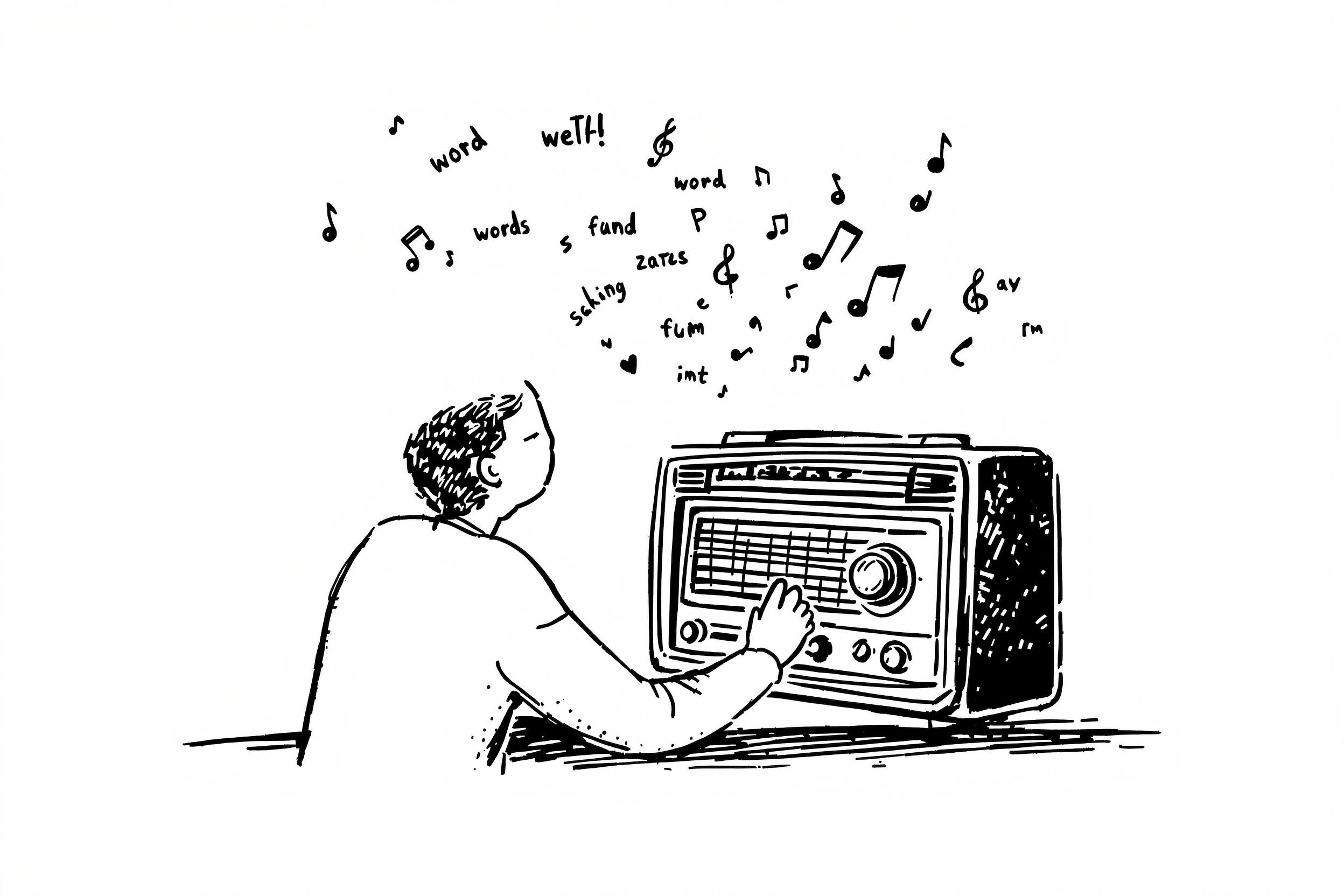
This adjustment isn’t manipulation; it’s alignment. You’re offering a clearer picture, so the right people recognize themselves in it. That’s psychologically empowering. Instead of a cryptic puzzle, the job post becomes an honest invitation.
Consider the Global Context
Workforces are increasingly global and diverse. English might be a second language for many candidates. Specialized jargon might be meaningless to someone who has all the right skills but learned them under different labels. AI can help flag overly local references, obscure abbreviations, or phrases that don’t translate well.
By embracing a global mindset, you expand your talent pool. You show respect for differences. A well-crafted job description feels welcoming to people from varied backgrounds, reducing cultural barriers that keep potential stars from applying.
Psychological Safety and the Application Process
Imagine a candidate who’s unsure if they meet every listed requirement. Research shows women and minority candidates often apply only if they meet nearly all criteria, whereas some others apply if they meet just a few. The wording of a job description can encourage or discourage these more cautious candidates. Adding lines like “If you don’t meet every requirement but feel excited about the role, we encourage you to apply” signals psychological safety.
AI can suggest adding these clarifying notes based on data. If your past postings underrepresent certain groups, maybe your language was too restrictive. Now you can adjust, showing that growth potential matters.
AI as a Tool, Not a Crutch
Let’s be clear: AI won’t magically solve hiring challenges. But it can help you see what you were blind to before. It can remind you that language is never neutral. It can highlight missed opportunities to connect with diverse candidates, attract seekers who value learning, and reassure seasoned professionals looking for a new challenge.
The final decisions remain human. The recruiter decides what to emphasize, the hiring manager shapes the role’s narrative, and the team interviews the candidates. AI is a helper who nudges you to notice the psychological dimension of your words. It’s a compass, not the map itself.
Practical Steps You Can Take Right Now
Let’s get concrete. If you’re writing a job description today:
- Ask yourself who you want to attract. Are you welcoming that audience with your language?
- Use a tool to scan for biased or exclusive phrasing.
- Show the draft to someone outside your industry—do they understand it?
- Consider adding a sentence encouraging people to apply even if they don’t meet every bullet point.
- Re-examine if the tone matches what you really want to convey.
These small steps build towards a more psychologically aware approach. Over time, as you track results, you’ll refine and iterate.
Practical AI Examples: Prompts That Work
Let’s look at some concrete examples of how to use AI tools like ChatGPT or Claude to improve job descriptions. Here are real prompts and their results:
Example 1: Making Technical Requirements More Inclusive
Original text:
“Must have 5+ years of Python development experience and expert-level knowledge of AWS.”
Prompt to AI:
“Rewrite this job requirement to be more inclusive and focus on capabilities rather than years of experience, while maintaining high standards.”
AI-improved version:
“Seeking candidates with strong proficiency in Python development and deep expertise in AWS. Demonstrated ability to design and implement robust solutions using these technologies is essential. Equivalent experience, skills, or learning pathways are valued equally, regardless of formal years of experience.”
Example 2: Addressing Unconscious Bias
Original text:
“Looking for a rockstar developer to join our aggressive, fast-paced team. Must be willing to work long hours and dominate in a competitive environment.”
Prompt to AI:
“Rewrite this job description section to be more welcoming and balanced while maintaining the core message and enthusiasm.”
AI-improved version:
“Seeking a talented and motivated developer to join our dynamic and collaborative team. We value dedication, innovation, and a strong drive to excel in a supportive and fast-paced environment. If you thrive on tackling challenges and contributing to impactful projects, we’d love to hear from you!”
Example 3: Clarifying Complex Requirements
Original text:
“Must possess advanced competencies in cross-functional team facilitation and demonstrate proven methodologies in agile transformation initiatives.”
Prompt to AI:
“How would you explain this role to a qualified candidate over coffee? Make it more conversational in 3 sentences.”
AI-improved version:
“You’ll play a key role in bringing teams together and helping them work more effectively across different functions. We’re looking for someone who really understands agile transformation and can guide teams using tried-and-true methods. If you enjoy facilitating collaboration and driving change in a hands-on, practical way, this could be a great fit!”
The key is to be specific in your prompts about what you want to improve. Ask the AI to focus on particular aspects like:
- Inclusivity and bias removal
- Clarity and readability
- Tone adjustment
- Balance between requirements and encouragement
Example 4: Culture and Values Communication
Original text:
“Our company values innovation and excellence.”
Prompt to AI:
“Tell me how we can make this more engaging and specific to help candidates understand what it’s really like to work here. Include concrete examples.”
AI-improved version:
“We believe innovation comes from diverse perspectives and the freedom to experiment. You’ll find yourself in an environment where it’s safe to try new approaches, where we celebrate learning from failures as much as successes. For example, we dedicate every other Friday afternoon to exploration projects, where team members can pursue ideas they’re passionate about.”
Remember to review and adjust AI suggestions based on your company’s specific context and needs. The best results often come from an iterative process: generate, review, refine, and test with real candidates.
I remember a company that struggled to hire engineers who valued mentorship and collaboration. Their job descriptions were stiff, full of “must have 5+ years of experience with X” bullet points. After using an AI tool to soften the language—highlighting growth opportunities, welcoming diverse skill sets—they started seeing a different kind of applicant. More curious learners, more team players.
They didn’t lower their standards. They clarified what they were really looking for. They created a better “signal” that aligned with their culture. That’s the psychology of job descriptions at work.
Moving Forward with Confidence
The future of hiring is about authenticity, inclusivity, and data-informed creativity. By acknowledging the psychological weight of language, we can craft job descriptions that resonate with talented individuals who once passed us by. AI is the new assistant whispering suggestions, showing you blind spots, and helping you refine your voice.
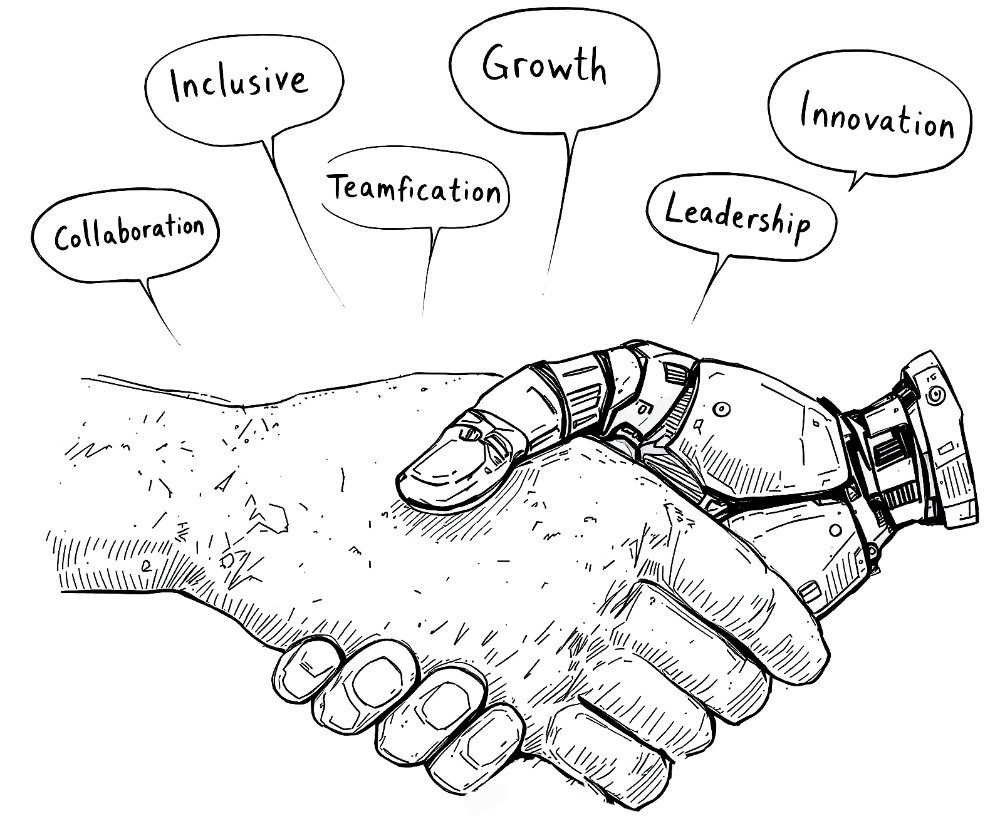
Ultimately, it’s about building teams that reflect a richer tapestry of human potential. Better language, informed by AI and guided by human judgment, leads to better hires. It’s that simple—and that profound. Embrace it, experiment with it, and watch your hiring transform.
This isn’t a one-time fix—it’s an ongoing conversation. The more you listen, the more you learn. And the more your job descriptions become honest, welcoming invitations rather than cryptic puzzles.
Ready to write better job descriptions? Try Machine Hiring for free! Request a Demo today!


